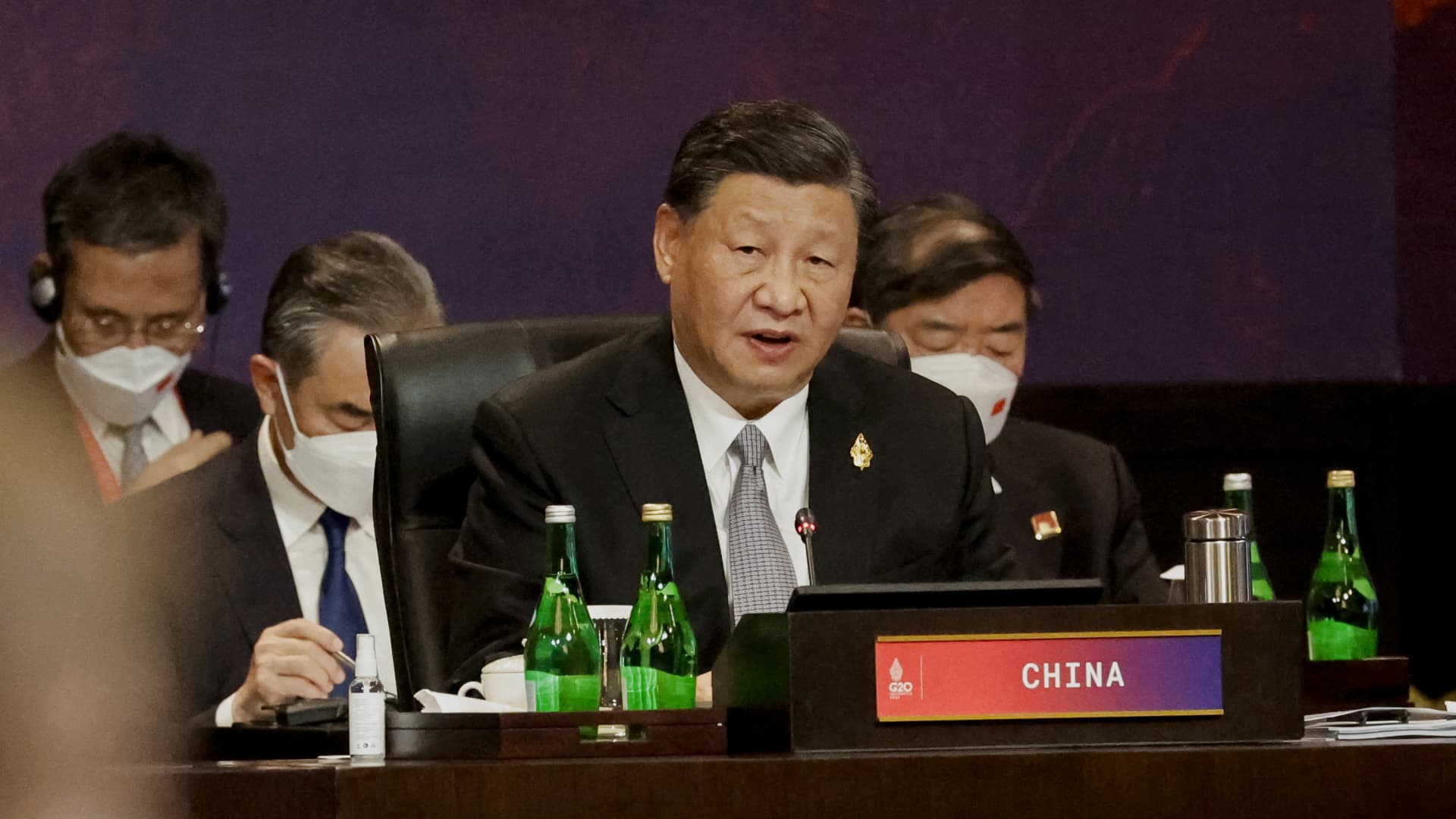China’s Xi has met with more than 25 world leaders since consolidating power at home

China’s President Xi Jinping attends a session during the G20 Summit on the Indonesian resort island of Bali on November 16, 2022.
Willy Kurniawan | Afp | Getty Images
BEIJING — A month after consolidating power at home, Chinese President Xi Jinping has stepped out onto the world stage to strengthen relations with the U.S. and other countries.
In all, Xi has met with more than 25 heads of state — including U.S. President Joe Biden — since Oct. 31, according to a CNBC count of releases on the Chinese Foreign Ministry’s English-language website. Earlier in October, Xi oversaw a leadership reshuffle of the ruling Chinese Communist Party that packed top positions with his loyalists and paved the way for him to gain an unprecedented third term as president.
Most recently, Xi hosted President of the European Council Charles Michel in Beijing on Thursday. That followed German Chancellor Olaf Scholz’s visit in early November, the first Western leader to do so since the pandemic.
“This year we see [Xi] coming out ever since his [September] SCO trip, coming out more and engaging more with the international community,” said Michael Cunningham, research fellow, China, at The Heritage Foundation’s Asian Studies Center. “That will be a challenge for the U.S.”
Cunningham said U.S. efforts to build overseas coalitions have been helped by Xi’s absence from the international stage for much of the last three years.
The meetings come after the Russia-Ukraine war and Covid restrictions on travel have pushed Beijing and the West apart. Tensions over Taiwan this summer further strained U.S.-China relations.
“Xi is restoring his pre-pandemic level of diplomacy through bilateral meetings with many state leaders attending the G20 summit in Bali,” Eurasia Group analysts said in a Nov. 18 report. “He met with leaders of advanced industrial democracies for the first time since the pandemic began and amid fraught relations between China and the West. Most of Xi’s meetings fueled a positive outlook for stabilizing relations.”
Xi finally met Biden in-person for the first time as U.S. president on Nov. 14, signaling a pause in this year’s downward spiral of relations between the world’s two largest economies. The week following, the countries’ military leaders met for the first time since U.S. House Speaker Nancy Pelosi’s controversial Taiwan visit in August.
The high-stakes Xi-Biden meeting signaled to some in China that relations with the U.S. were aligning more with vague terminology that Beijing often uses — such as “mutual respect” and “win-win cooperation.”
“For China, the wording carries some token symbolism, that is equality,” said Shen Yamei, deputy director and associate research fellow at state-backed think tank China Institute of International Studies’ department for American studies. “We need to handle our relations on equal footing, by respecting each other and win-win cooperation, rather than, as the U.S. said, the U.S. is dealing with others from a position of strength. That’s not equal.”
Shen said China and the U.S. can work together more easily on issues of climate change, public health and macroeconomic coordination. She said “it will be a little bit difficult on issues more concerned with traditional security issues, like our understanding of the Ukraine crisis and the way to work [it] out.”
“The important thing is we [keep] in mind the responsibility of a major country to the world by cooperating with each other,” she said.
Creating ‘positive conditions’ for China
The Biden administration has called China a competitor, while strengthening U.S. ties with other countries, especially in the Indo-Pacific.
Heads of Japan, South Korea, Australia, Indonesia and Italy met with both Xi and Biden in the last several weeks, based on government announcements.
“Right now the political environment in China is different,” Cunningham said. Xi “is trying to get relationships back on the right track so that the conditions are positive for China.”
“The way China sees it, the right track and positive conditions is where the world’s most powerful countries, the U.S., Western Europe, some of the East Asian countries, are not actively opposing China’s rise as a global power,” he said. “That was the track we were on largely before 2018 when U.S.-China trade tensions really boiled over.”
In his speech at the Chinese Communist Party congress in October, Xi said the Party has “safeguarded China’s dignity” in the face of international changes and warned of “dangerous storms” ahead.
Just before that political meeting, Xi took his first trip outside the country since the pandemic, to Uzbekistan for a meeting of the Shanghai Cooperation Organization, an Eurasian intergovernmental group. While there he met with Russian President Vladimir Putin and Turkish President Recep Tayyip Erdogan, among other country heads.









